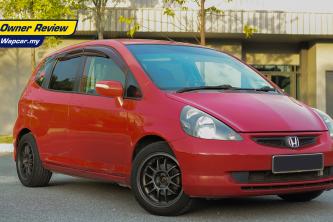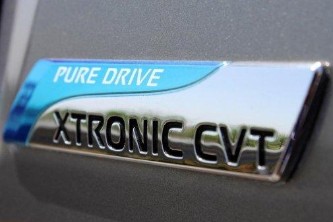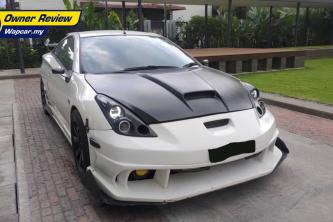torque flywheel
torque flywheel Related Articles

Toyota 4A-GE 16V/20V - legendary 'tofu delivery' engine, what makes them great?
compresssion (11:1), larger diameter individual throttle bodies (43 to 45mm), hotter camshafts, plus lighter flywheel
Here are some cars that go fast in style and comfort like the 620 PS McLaren GT
options), the McLaren GT is motivated by a 4.0-litre twin turbocharged V8 that makes 620 PS and 630 Nm of torque
Proton X50 1.5L Turbo has an award winning engine, so what's the big deal?
On its own as a pure ICE (internal combustion engine), the 1.5TD serves up to 179 PS and 265 Nm of torque
Deliveries of the 2021 Honda City RS to start this March
Boasting 253 Nm of torque thanks to its i-MMD hybrid powertrain, the City RS does give near-instantaneous
DCT vs torque converter, which is your preferred transmission?
of the most common types of automatic transmissions today are the dual-clutch transmission (DCT) and torque
2021 Nissan X-Trail engine details revealed
likely to soldier on with its predecessors 2.5-litre QR25DE powerplant, albeit with improved horsepower, torque
2021 (W213) Mercedes-Benz E-Class facelift launching in February in Thailand, Malaysia next?
Mercedes-Benz E220d is powered by a 2.0-litre 4-cylinder turbodiesel engine that makes 194 PS and 400 Nm of torque
HP vs torque: Does torque really matter?
Torque is something else.False advertisement.
2019 Mazda CX-5, 2.0L, 2.5T, 2.2D, which engine to pick?
But in reality, it is fantastic for city driving with decent low-end torque and smooth power delivery
2020 Proton X70 CKD: What's new compared to before?
It still makes 184 PS as before but torque has been increased by 15 Nm, now twisting 300 Nm of torque.Engine
Next-gen Toyota 86/Subaru BRZ to get N/A 2.4L engine with 220 PS/240 Nm
torque.Compared to the current generation’s 2.0-litre engine, that one makes 207 PS and 212 Nm of torque
Here’s why the all-new 2020 Honda City RS with i-MMD doesn’t need a gearbox
but none operates the usual drive belts of a conventional CVT, or multiple ratios of a conventional torque
Should you buy the Proton X50 or wait for the Perodua D55L?
The D55L uses a 1.0-litre turbocharged 3-cylinder engine with 98 PS and 140 Nm of torque paired to a
Why are Audi RS and BMW M ditching DCTs in favour of torque converters?
and BMW M4 performance cars on our shores, it seems that there is a shift in direction towards the torque
2020 Volkswagen Tiguan Allspace 1.4 TSI vs 2.0 TSI - Do you need the extra power?
TSI Highline is powered by a 1.4-litre turbocharged 4-cylinder engine that makes 150 PS and 250 Nm of torque
Proton X70 CKD: Will the dual-clutch transmission be reliable?
will be fitted with a new 7-speed wet-type dual-clutch automatic transmission, superseding the 6-speed torque
2021 VW Golf Mk8 for Malaysia to drop DSG for 8-speed torque converter?
that the upcoming 2020 Volkswagen Golf Mk8 will drop the famed dual-clutch automatic in favour of a torque
Perodua Ativa's (D55L) CVT to be better than Proton's. What's the D in D-CVT?
higher speeds, the clutch engages and power is routed to the planetary gear set, creating a simulated torque
The 7-speed wet DCT makes the 2020 Proton X70 CKD faster and more fuel efficient
popular SUV is the change to a 7-speed dual-clutch transmission (DCT), replacing the conventional 6-speed torque
Geely-Volvo’s CEVT engine boss explains why the Proton X50’s 3-cylinder is better than a 4-cylinder
design.Explaining them requires a Ph.D but Sandquist briefly said the use of counterweighted crankshafts, dual mass flywheel
torque flywheel Post Review
In projection to one of three surfaces, area of rotating flywheel change when express torque, and flywheel itself rotate as reaction wheel on itself in this surfaces. This reaction cause additional areas change. The second precession. This oscillation forms nutation. https://t.co/ChrysiSxu8
Buddy's 856 NF his grandpa bought new has a new lease on life again. Runs and drives like a top! All new/rebuilt fuel & coolant system, rebuilt head and rockershaft, HD clutch, PP, flywheel, HD torque, all new bearings, MCV, range & speed covers rebuilt...list goes on... https://t.co/ZoHyk7qgdk
Pretty sure after you unbolt the torque converter from the flywheel and then remove the transmission, the flywheel is supposed to stay with the engine. Not only were the flywheel bolts sheared off, the crank is broke too. https://t.co/xOPqS0sG3V
XRAY XB8 & XT8 aluminium high torque flywheel #Mud https://t.co/kCq2l2oqIy https://t.co/NTdKtv3PtT
It's Wet Wednesday with 400 HP and 400 lb-ft of torque at the flywheel! #HSV_CARS #Jeep #OffRoadJeep #WetWednesday https://t.co/qaGKIP1CMs
Fuck you and your 360 some ft lbs of torque flywheel nut! http://t.co/WOlV0GhkDn
33日後に2足歩行ロボットを完成させたい俺 28日目 #33日2足歩行ロボ https://t.co/cbFU0zU6eJ
Why is it only the japaneese that just give you a torque? Flywheel bolts 118nm none of this stretch bolt bollocks! https://t.co/KN8KUzcw7O
I love this thing, it's a torque multiplier for the single flywheel nut that gets 253 ft/lbs of torque http://t.co/I1Nm7ego7l
Torque flywheel in 3 steps to 74 lbs/ft #lsx #musclecar #clutch https://t.co/uQpjiAcRgZ
torque flywheel Q&A Review
What is the formula to calculate torque in a flywheel?
Flywheel torque means angular acceleration -I:Nm/N+n(2gh/w2-r2) Where, I = Moment of inertia of the flywheel assembly N = Number of rotation of the flywheel before it stopped m = mass of the rings n = Number of windings of the string on the axle g = Acceleration due to gravity of the environment. h = Height of the weight assembly from the ground. r = Radius of the axle.
What kind of forces, torques, are applied to an average car engine flywheel?
The flywheel is attached to the drive-shaft for the crank. There are rotational deformations due to the torsion effect of the drive moment and the inertia moment caused by the angular acceleration. The maximum stress occurs on the hub and near shaft-hole surface, however the maximum deflection is along the right outer-edge of the rim. The stress and deflection almost at any point are not constant. They are alternating transiently as the flywheel is rotating.
A flywheel has a mass of 12.5kg and a diameter of 0.30m. It's initial RPM is 90. It is then increased to 720 RPM within 8 seconds. What is the torque applied on it?
Considering the flywheel to be of disc type, we have I= mr^2/2= (12.5*0.15^2)/2= 0.140625 kg-m^2 angular acceleration, a= (w2-w1)/t w2= 2*pi*N2/60= 75.398 rad/s w1= 2*pi*N1/60= 9.425 rad/s Now we can use the formula for torque developed, T= I*a this gives, T= 0.140625*(75.398-9.425)/8 . = 1.16 N-m You will get different answer (2.32 N-m) if you consider the flywheel to be of ring type.
How is the size of a flywheel related to torque?
A flywheel is used to even out the fluctuations from a rotating shaft output. The relationship is as follows: Driving Torque= Moment of Inertia of flywheel x Angular accelaration So if we assume a constantly increasing torque, the higher the MI of flywheel, lower will be the acceleration (hence lower fluctuations). More than the size, it is the MI of the flywheel that is decisive. Putting a gear between the driver and load will change the inertia of driver shaft. So changing gear doesn't simply change the output speed, it also changes the torque. This is the reason lower gears (gear ratio high) in a car gives better towing power like hauling a heavy load or climbing a hill.
What would be the torque of a 126 kg flywheel of diameter 0.111m running at 1400 rpm?
Your question is not clear If flywheels running at constant speed I.e. there is no angular acceleration so torque becomes zero. T = moment of inertia * angular acceleration Here moment of inertia is m*r*r/2 for disk type flywheel{assuming}=126*.055*.055/2 I= 0.190kg meter square And speed is given 1400 rpm ,if it is constant then torque is zero or if flywheel attains speed in 1 sec than angular acceleration is 1400rpm per sec then we can calculate torque of flywheel by multiplying angular acceleration to moment of inertia.
When a torque is applied perpendicular to a spinning flywheel's rotation axis, why doesn't the magnitude of the flywheel's angular momentum change, only the direction of its angular momentum?
When a force acts perpendicular to an object’s linear momentum, it changes the direction of the momentum. Because a sideways force has neither a forward component (which would speed the particle up) nor a backward component (which would slow it down), it doesn’t change the object’s speed. Similarly, for a torque to change the magnitude of an object’s angular momentum, it must have a component acting in the direction of its angular momentum (i.e., along the axis of rotation.)
How does the flywheel reduce the torque required to start an Internal Combustion Engine?
The role of the flywheel in starting an engine is to carry the ring gear around its outer edge. The starter motor has a gear which engages the ring gear to rotate the flywheel. To rotate the engine to start it, the starter motor has to overcome the rotational inertia of the flywheel plus friction and inertia of the engine’s moving parts. A heavier flywheel will require more torque to get up to the starting speed of the engine. A bigger diameter flywheel would require less torque but more speed on the starter motor to start the engine.
What is the difference between a fluid flywheel and torque transmission?
Fluid flywheel has just two components an impeller and a turbine. Oil is circulated by centrifugal force to the outside diameter of which ever half is turning the fastest causing oil to spill over into the slower member and keep circulating in this manner until both halves are turning at the same speed. Solid drive occurs when the oil is basically acting as a solid and driving via the vanes on the inside of both halves. In practice there is up to 5 percent slip. They are slow to achieve a good solid drive. They were the forerunner to modern automatics used in preselector transmissions. Torqueconvertor are fluid flywheels with one additional component know as a stator. This has curved fins which direct returning oil from the outer diameter of the turbine back at the vanes by way of curved vanes to hit the rear of the impeller vanes thus assisting the impeller. A sprag clutch prevents the stator from turning backwards and once speed is achieved will turn forward in unison with the whole of the torqueconverter. Some slip still takes place but is around 2percent.
What is resisting torque in turning moment of flywheel?
When you rotate a flywheel, the torque you must apply depends on two things: how much acceleration or rate of change in rotational speed you want, and the mass of the flywheel (actually the moment of inertia, which depends on how far the mass is from the center.) Throw in some friction and air resistance if you want to be precise.
If the maximum torque of a car is 190Nm, does it mean that the flywheel can be stopped by 190N force applied at 1 meter from the center?
NO, it is not compulsory. Imagine a flywheel having a rotational speed of ,\omega , and moment of inertia ,I , then energy stored in this flywheel is given as Energy = ,\frac{1}{2},I\omega^2 ,. Therefore, energy stored in a flywheel depends on its mass, size and speed of rotation. You see that torque of an engine has nothing to do with flywheel. The function of a flywheel is to make the varying torque of engine more uniform. Anyways, in order to stop this flywheel, you must somehow dissipate all the energy stored in it. A torque can be applied in opposite direction of rotation to stop it (just like a force in opposite direction of a motion stops the motion). Therefore, to stop the flywheel Energy stored = work done by torque in opposite direction, or \frac{1}{2}I\omega^2= T\theta where T is the torque applied to stop it and ,\theta , is the amount of rotation occurred before it finally stops. Also, one cannot instantaneously stop the flywheel or else the shocks will be huge and system will fail. Therefore, time factor also plays an important role in stopping of flywheel. The more is the stopping torque, less will be the time taken to stop it.
 HOME
HOME 


